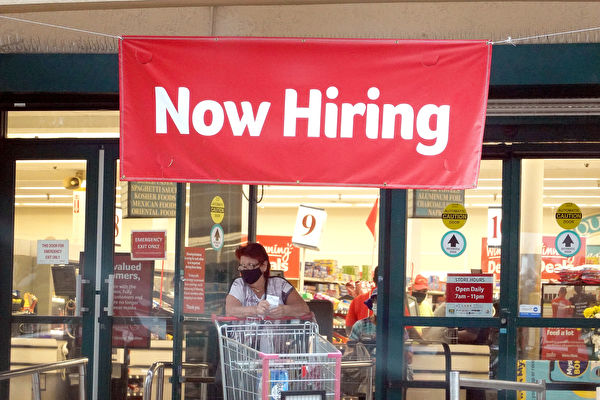Due to the increase in wages and benefits, the rise in labor costs in the first quarter in the United States exceeded market expectations, highlighting a sudden increase in inflation pressures at the beginning of this year.
According to data from the Bureau of Labor Statistics (BLS) in the United States, a widely watched labor cost index by the Federal Reserve (Fed) – the Employment Cost Index (ECI) – rose by 1.2% in the first three months of 2024. This was higher than the 0.9% growth in the fourth quarter and above the market’s general estimate of 1%.
Compared to the same period last year, the ECI dropped to 4.2%. In real terms (adjusted for inflation), employment costs increased by 0.1% during these three months.
In the first quarter, benefits increased from 0.7% to 1.1%, and wages also grew by 1.1%.
According to the report from the Bureau of Labor Statistics in the United States, the income growth in the public sector surpassed that of private sector employees.
Compensation for state and local government employees increased by 1.3%, with wages and salaries rising by 1.4% and benefits increasing by 1.2%.
Compared to the same period last year, the change in labor costs remained steady at 4.8%.
In contrast, compensation in the private sector increased by 1.1%, with wages and salaries rising by 1.1% and benefits increasing by 1%.
The year-on-year wage growth for private sector employees slowed to 4.1%.
The subsequent calculations for labor costs will be announced on May 2nd, where the Bureau of Labor Statistics in the United States will release the first-quarter Unit Labor Cost Report. Preliminary estimates indicate that unit labor costs rose by 3.2% from January to March.
Meanwhile, other labor indicators also highlight the persistence and stubbornness of wage pressures.
The wage inflation tracker at the New York Fed remained around 5%. The alternative three-month moving average wage growth median at the Atlanta Fed exceeded 4%.
Federal Reserve officials insist that wages are not fueling inflation.
“Our goal is not wages; our real goal is inflation,” said Federal Reserve Chairman Jerome Powell in a press conference last month. “Wage growth has been quite robust, but over time, they are gradually receding to more sustainable levels.”
The ECI report is the final inflation report before the Federal Open Market Committee meeting in May. It is expected that the Federal Reserve will keep interest rates unchanged within the range of 5.25% to 5.50% and hint at delaying rate cuts in the face of rising inflation trends.
As inflation trends develop in the wrong direction, more monetary policymakers are not showing a sense of urgency for rate cuts. Futures markets expect the policy rate to shift for the first time by the end of the year.
The data on labor costs has caused anxiety in the financial markets, with major U.S. stock indices falling by as much as 1.2% during trading.
Yields on U.S. government bonds mostly rose, with the benchmark 10-year Treasury yield surpassing 4.66%. The two-year Treasury yield rose above 5.01%, and the 30-year Treasury yield increased to 4.775%.
The U.S. Dollar Index (DXY), which measures the dollar against a basket of currencies, surged past the 106.00 mark.
The April employment report will be released on May 3rd.
Market observers expect the U.S. economy to create 243,000 new jobs, with the unemployment rate remaining unchanged at 3.8%.
However, despite over eight million job vacancies in the labor market, more people are becoming increasingly less confident about job prospects.
According to the Conference Board’s Consumer Confidence Index (CCI) released in April, consumers indicated a weakening of current job conditions, with more people saying that “jobs are hard to get.”
Overall, the CCI index for April decreased for the third consecutive month, falling to its lowest level in nearly two years.
Dana M. Peterson, Chief Economist at the Conference Board, stated in the report, “The April confidence index further declined to its lowest level since July 2022 as consumers became less optimistic about the current labor market conditions and more worried about the future business environment, job opportunities, and income.”
“Although the overall index for April declined,” he said, “optimism about the current situation has continued to offset concerns about the future since mid-2022.”
The latest consumer expectations survey by the New York Federal Reserve Bank found public concern about finding and keeping jobs.
The average probability of unemployment within the next 12 months increased by 1.2 percentage points, reaching 15.7%, the highest since September 2020 and higher than pre-crisis levels. Additionally, the average probability of finding a job dropped to 51.2%, hitting a new low in three years.
According to the latest Freedom Economy Index released by RedBalloon, consumer concerns about the labor market may be justified.
The monthly report compiled in collaboration with Public Square found that small business owners are tightening their belts to avoid hiring new employees. Respondents noted that in the current labor market, they would rather “be short-staffed” than “over-hire.”
Andrew Crapuchettes, CEO of RedBalloon, mentioned in a statement, “This year might be the toughest labor market we’ve seen in our generation. U.S. employers are facing a perfect storm of challenges that could stifle economic growth and America’s competitiveness in the global market.”

